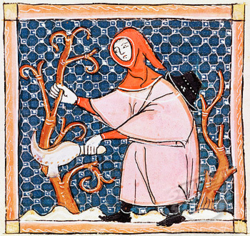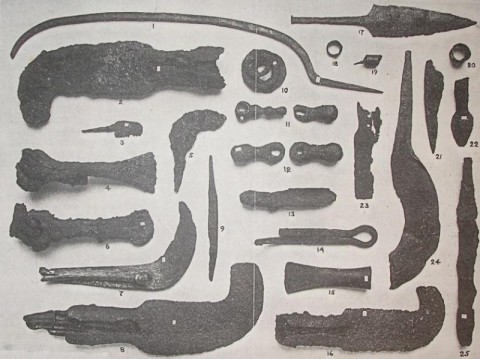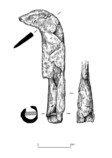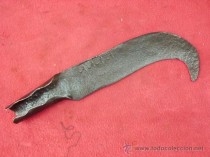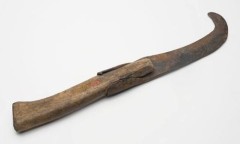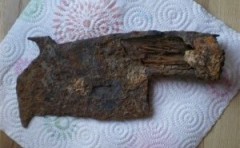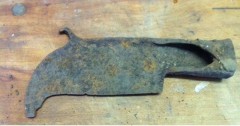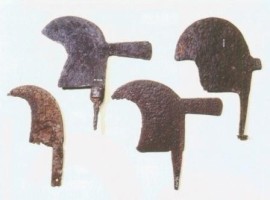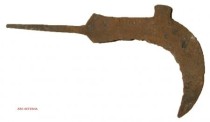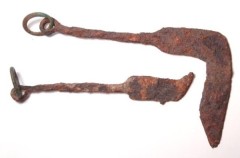Roman billhooks
The billhook was in use in Britain before the Roman invasion of 50AD. It was common in most Roman provinces, and probably developed from those used in the earlier Greek civilisation. Those in the Mediterranean probably followed the Greek model, but it is probable that the tool was developed further by Roman iron-masters and blacksmiths to provide a range of tools for different tasks. Cato mentions four different types for use in a vineyard.
Many examples of Roman tools survive, from those found beneath the ashes of Pompeii in Italy, to those found in ruins of Roman villas in Britain and elsewhere. Often illustrated on frescoes or mosaics, or even on statues, a billhook can be seen in the hand of a God (e.g. Saturnus) or a humble vineyard worker...
A wide variety of sizes and shapes of blades survive from the Roman period, both in the UK and continental Europe. Handles were fitted by tang or a socket, and in some cases the handle has survived relatively intact (e.g. Glastonbury (UK) or Pompeii (IT)). The same shape may be found over a wide area, even several countries, or just limited to a small locality.
Roman-British from Camerton, near Bath, Somerset (British Museum collection)
Romano-British from Hod Hill, near Stourpaine, Dorset (British Museum collection)
Roman era from Lakenheath (UK) - British Museum collection.
One of the great problems with dating tools that are found out of their context, i.e. without provenance, is that the same type may have been in continuous use for a long period of time. This 12th century manuscript attributed to Gregorius (Dijon, France ref BM MS 0173) shows an identically shaped billhook being used to prune trees...
A modern copy (by Daegrad Tools) of a Roman era vine pruning hook found at Silchester in Britain.
From Chapter 4 of 'Artefacts in Roman Britain: Their Purpose and Use', edited by Lindsay Allason-Jones, 2011. Sîan Rees is the author of 'Agricultural Implements in Prehistoric and Roman Britain'
Roman Bilhooks, Sian Rees.pdf
Adobe Acrobat document [294.1 KB]
